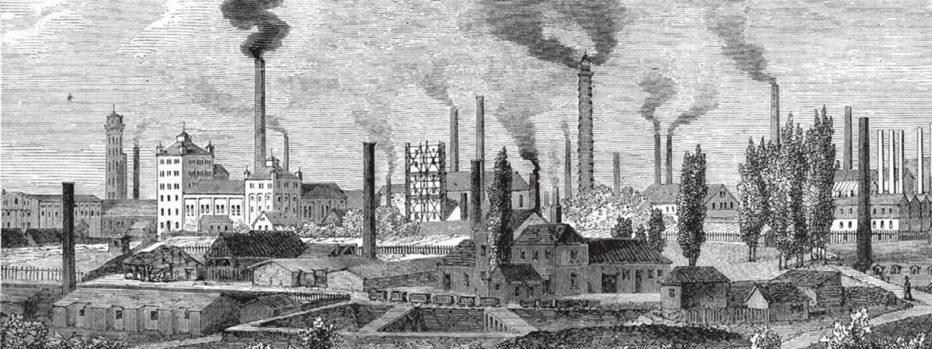Jessica Sharkey
 Despite being the most common method of measuring the total value of goods produced and services provided in a country, GDP (Gross Domestic Product) is considered a traditional and out-dated assessment of economic progress once useful in an industrial economy that is no longer relevant. The Bank of England is heavily dependent on GDP as a measure of activity in the economy and uses it to compare productivity with other countries as well as the sustainability of production (output) in terms of the productiveness of the economy. There are increasing doubts regarding the reliability of GDP and whether it really measures the output of an economy.
Despite being the most common method of measuring the total value of goods produced and services provided in a country, GDP (Gross Domestic Product) is considered a traditional and out-dated assessment of economic progress once useful in an industrial economy that is no longer relevant. The Bank of England is heavily dependent on GDP as a measure of activity in the economy and uses it to compare productivity with other countries as well as the sustainability of production (output) in terms of the productiveness of the economy. There are increasing doubts regarding the reliability of GDP and whether it really measures the output of an economy.
Firstly, GDP does not account for the shadow economy, which involves legal as well as illegal economic activities unreported to the tax authorities. For example, it can refer to activities such as prostitution or the sale of illegal drugs, but also a manual worker who is paid in cash and does not report their earnings to the tax collector; all of which distort the official economic figures, and essentially mean that economists may be making wrong calculations and creating policies that are self-defeating. The government may, as a consequence, be faced with a budget deficit and have to increase taxes to gain more tax revenue, which would decrease the desire of consumers to spend, reducing demand and therefore decreasing supply. This reduces output and affects GDP negatively. Schneider, Friedrich. (2002). Hiding in the Shadows: IMF. However, starting September 2014, the European Union obligated all its members to count all transactions done under mutual agreement as part of their GDP. Although this is a good attempt at measuring all output in GDP, it would be hard to track all hidden activities therefore estimation methods are used. As this varies between each country, it makes for an unreliable comparison of the effect of the shadow economies on GDP in different countries. Hahn, Harley. (2014) Limitations of GDP: Economic activity that isn’t counted. Santa Barbara: Joseph Cole.
 There may be an attempt to include figures from the shadow economy in the GDP, but unpaid labour is another source of economic activity completely excluded from GDP figures. Volunteer work can create a great amount of output, all of which is not included in official estimates of GDP because of the absence of interaction of money. Professional workers may offer their service to a close friend or family member without remuneration, the same service that they would offer to a customer, but again, this would not be included as part of GDP, and less output would be recorded.
There may be an attempt to include figures from the shadow economy in the GDP, but unpaid labour is another source of economic activity completely excluded from GDP figures. Volunteer work can create a great amount of output, all of which is not included in official estimates of GDP because of the absence of interaction of money. Professional workers may offer their service to a close friend or family member without remuneration, the same service that they would offer to a customer, but again, this would not be included as part of GDP, and less output would be recorded.
Another factor that GDP does not take into account is our rapidly increasing productivity and improvement in quality. Technology implemented in every little task that we do has meant that we can produce output and offer services faster than ever. In his book ‘Everlasting Light Bulbs’, John Kay states that ‘price indices are hedged by doubts’ as ‘the improvement in quality more than offsets the increase in cost’, and that ‘if we are so uncertain about what has really happened to prices, we are therefore uncertain about what has really happened to output and economic growth.’ For example, because of increased productivity, GDP may even be reduced due to less consumption of things such as fuel and printing. The Bank of England sets a target for the inflation rate at 2.0%, but as we are currently above it (2.4%), the Monetary Policy Committee sets the interest rate and carries out other measures to reach the target. However, when the Office for National Statistics tracks price changes, they don’t consider the new efficiency and productivity that new products bring. For example, the price of electric light will evidently be higher than that of candlelight, but it is also a lot more efficient. Inflation rates may therefore be distorted and more overstated than we know, and can cause the wrong measures to be carried out by the Monetary Policy Committee, which will in turn have possible negative economic consequences and lower GDP. (For example, an overstated inflation rate will lead to an increase in interest rates, which will mean that consumers may tend to save money, and businesses may borrow less money to invest, which would decrease output and GDP.) Many internet services are free and although they contribute to output, do not show up in GDP figures, which would favour traditional methods such as printing and posting. This is just one of many examples that demonstrate how GDP can no longer keep up with the changing economy, the changing methods of work.
 It is worth noting that population growth and economic growth were known to generally correlate from 1960s – 1980s as an increasing population means more workers and therefore, more output produced which then increases GDP. However, from the early 2000s onwards, this correlation has become less apparent, possibly because many of the workers in the UK are undertaking low paying service sector jobs as part of firms that are labour-intense. This actually damages productivity and affects long-term economic growth as firms are not incentivised to invest in capital-heavy industries. Therefore, what seems to be creating high output and raising GDP could be damaging to the economy and not reflect the true output, when compared to what we are capable of doing with technology and capital goods now. Berry, Craig. (2014). The relationship between economic growth and population growth. Sheffield: University of Sheffield, 2.
It is worth noting that population growth and economic growth were known to generally correlate from 1960s – 1980s as an increasing population means more workers and therefore, more output produced which then increases GDP. However, from the early 2000s onwards, this correlation has become less apparent, possibly because many of the workers in the UK are undertaking low paying service sector jobs as part of firms that are labour-intense. This actually damages productivity and affects long-term economic growth as firms are not incentivised to invest in capital-heavy industries. Therefore, what seems to be creating high output and raising GDP could be damaging to the economy and not reflect the true output, when compared to what we are capable of doing with technology and capital goods now. Berry, Craig. (2014). The relationship between economic growth and population growth. Sheffield: University of Sheffield, 2.
I believe that GDP is in some ways a good measure of economic activity because it captures the overall state of the economy. The highest GDP rated countries are all either developed country or a BRICS member (at a state of newly advanced economic development). It provides a summary of an economy and a place where businesses can look to increase their confidence in investing more, and hiring more workers or paying higher salaries, which leads to more consumer spending on goods and services.
However, GDP fails to capture many key points. Higher GDP may mean higher incomes, but this is not necessarily for the whole country. Where an increasing inequality of income takes place, as the GDP and supposed ‘economic growth’ of a country is happening, the incomes of the majority of working class people may be in fact decreasing while the heads of firms and shareholders receive all the profits, which would mean that consumer spending as a whole is not really increasing, but the richest people simply have more spending power, and they may demand more luxury goods and services abroad, which would not contribute to output or GDP.
After the focus on increasing incomes, there is a higher importance on the wellbeing of a Nation. This may involve security, political voice, environmental sustainability and everything else GDP fails to record. The USA is the country with the highest GDP, which should mean that it is the country with the most economic growth. We would expect that in such a country, its citizens would feel happy and safe, however, the cost of incarceration in the USA actually accounts for 6% of the GDP (more than $1 trillion). Things like prison can increase the GDP of a country and give the illusion that it is prospering, while reduction in the number of people in healthcare due to a healthier nation would reduce GDP. Therefore, GDP may measure output of an economy, but certainly not in a sustainable, modern way.
An improvement could be green GDP, which takes into account environmental degradation and resource depletion. However, according to Joseph Stiglitz, when economists and the department of commerce proposed to do this, they were threatened by the coal industry to take away funding research that supported this alternative measure to GDP. I believe this only reinforces the idea that GDP is an old-fashioned and unsustainable measure. It may have once done its job well but as we are so over – dependent on it, its flaws are highlighted and GDP is certainly not a perfect measure of the output of an economy.

No comments
Post a Comment
Please only leave respectful and informative comments. Thank you!
Note: only a member of this blog may post a comment.